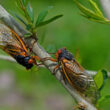Municipal skate parks catch air
Verts, half-pipes and grinds: They represent skating to the nation’s youth and a liability nightmare to many city parks departments. Because of the perceived recklessness associated with skateboarding and inline skating, many local governments have banned skating on commercial and community properties, as well as on school grounds, leaving skaters with very little recreational space.
As a compromise, some local governments are building skate parks, complete with bowls, rails and other skating elements to ensure a safe environment for skaters. By constructing a designated skate park, city officials meet the demands of their young residents and ensure that skaters are not damaging city or privately owned properties, or disrupting pedestrians and other park users.
Planning
The popularity of skating has increased steadily over the past several decades, as traditional roller skates have evolved into inline skates and skateboarding has emerged as a television sport. In fact, ESPN’s X Games for extreme sports, held in San Francisco last summer, attracted more than 200,000 spectators and 400 international competitors in events for skateboarding, inline skating and BMX biking. First-place winners took home $10,000.
Regardless of the growing popularity of skating, many government officials are concerned about skating safety, and they do not want to be held responsible when injuries occur. In 1997, California Gov. Pete Wilson approved a state law that designated skateboarding as a hazardous recreational activity. Under the act, skaters basically skate at their own risk, and their ability to file injury claims against cities is limited.
Following passage of the law, many of California’s local governments passed ordinances prohibiting skateboards in parks and other areas, leaving skaters nowhere to go. However, some cities tried to compromise with local skaters. For example, after the Modesto City Council passed an ordinance prohibiting skateboards in downtown business areas and parking lots and on school properties in January 1995, the city created a task force to investigate building a skate park. The 27-member task force consisted of residents, local business owners, representatives of the police department and 13 skaters.
The city set aside $15,000 to hire a park designer – Fullerton, Calif.-based architect Purkiss Rose-RSI – and began researching other skate parks and liability issues. Ac-cording to Recreation Supervisor Doug Lemcke, the task force discovered that, in 1996, the National Safety Council, Itasca, Ill., listed football, volleyball and ice hockey as sports more dangerous than skateboarding. Furthermore, a survey of 48 California skate parks revealed that only two had been sued after injuries. Santa Cruz, which has operated a skate park since 1978, has been sued twice.
In Grand Junction, Colo., home to Westlake Skatepark and Eagle Rim Park skate facilities, city officials also realized that, while cuts and scrapes are common at skate parks, claims and lawsuits are not. Most cities post rules requiring skaters to wear helmets, elbow pads, knee pads and wrist guards. Some cities, such as Bellevue and Santa Paula, both in Calif., even require skaters and/or parents of skaters to sign waivers absolving the city of liability.
Modesto passed an ordinance requiring use of helmets, elbow pads and knee pads. It also stated that skaters who fail to wear the equipment are negligent and therefore skate at their own risk, according to Lemcke. “Some kids don’t want to wear helmets,” he says.
Site selection
If liability is not a hindrance, cities can proceed with site selection and development of a skate park. Lemcke recommends choosing a highly visible site, perhaps close to a roadway, so that it can be easily located, attended and patrolled. “Cities should not pick an isolated location for a skate park,” he says.
High visibility also ensures that police can better patrol the area and cuts the likelihood of illegal activity or rule-breaking. Additionally, Lemcke says, “Skaters like to show off. They want to be seen.”
Frequently, cities can tack a skate facility onto an existing park if space allows. Co-locating saves parks departments the additional costs of building restrooms or concessions. For example, by building a skate park at an established recreational site at Beyer Community Park, Modesto was able to feed off existing amenities as well as site recognition.
Hollister, Calif., chose a site close to a roadway for the Hollister Skate Park, which should be completed by next spring, according to David Rubcic, associate engineer for the city. The facility is being built at Veterans Memorial Park, which already has drainage facilities and restrooms. Although the park is in a residential area, the closest house is about 600 feet away. “We don’t anticipate any noise problems,” Rubcic says.
Since noise can pose problems, many parks departments do not build recreational facilities close to neighborhoods. However, in Grand Junction, one group of residents requested that the skate park be built in their neighborhood at a neglected drainage area. The fact that the site had no sewer utilities and, thus, no restroom facilities, added to the $223,000 construction cost. Park planners also included heavy landscaping to serve as a buffer between the skate park and the residents.
The design team
Because many parks planners are not familiar with skate park features, designing one presents a unique opportunity for young people and adults to work together, Lemcke says. “I had no idea how to build a skate park,” he says. “I really relied on the kids’ expertise.”
Skaters in Hollister submitted drawings for their skate park. The park planners toned down some of the advanced features that skaters requested so that less experienced skaters would have options, too. The 8,000-square-foot park will include one 3-foot-deep bowl, one 5-foot-deep bowl, quarter pipes and various ramps and edges for skateboarders and inline skaters.
Including skaters in the design process benefits everyone, Rubcic says. “If skaters are involved, they have a sense of ownership, and they will take better care of the park,” he says.
As in Hollister, planners for Grand Junction’s Westlake Skatepark incorporated ideas and suggestions from local skaters. The park features a 7-foot-deep rectangular bowl, a free-form 7-foot-deep open-ended bowl, a street skate area and a 10-foot-deep bowl with a keyhole slot entryway. Because the park has grown in popularity since its May 1997 opening, Grand Junction is constructing a second facility. Eagle Rim Park, planned for completion by summer 2000, will contain elements for less experienced skaters, including an extensive street skating area, steps, rails and ramps.
“If I had it to do over, I would have used more space for street skating and not put in the 10-foot hole [at Westlake],” says Shawn Cooper, Grand Junction parks planner. “The big bowl was geared for very experienced skaters, and it’s not getting a whole lot of use. Street skating is the highest use area at Westlake.”
Modesto’s 13,000-square-foot park also is aimed at intermediate and advanced skaters, and the city may add beginners’ facilities at a later date, Lemcke says. The next item on the agenda likely will be lighting.
The majority of skate parks surveyed by Modesto do not have outdoor lights because it is an extra expense and because parks departments do not want skaters to use the parks at night and create noise. Most skate parks are open from dawn to dusk.
Funding
Because of the high cost of concrete and specialized design services, skate parks can be cost-prohibitive for local governments. And, since demand for the facilities is high, many cities rely on financial support from the community to fund construction.
Modesto’s research showed that skate parks cost between $50,000 and $200,000, depending on size and the number of features. Modesto’s park totaled $145,000, excluding landscaping costs. The city contributed $150,000 from its capital improvement plan budget, and the task force raised another $40,000 for landscaping in three months from outside contributors, including parents, business owners, skaters and the city police department. Persons or businesses who gave a minimum of $1,000 received recognition on a permanent plaque at the park.
Not all skate parks receive as much in city funding or in private donations. In Hollister, city officials were not always enthusiastic about a skate park, Rubcic says. “The most difficult part of this process has been getting the city council to fund the skate park,” he says.
In researching liability – a major concern – Rubcic visited eight skate parks for ideas and background information. Based on other cities’ successes and local demand, the city approved $120,000 to fund the skate park. That amount should be sufficient, Rubcic says. If not, the city will turn to the community for donations.
Making and breaking rules
Ongoing costs for a skate park are minimal, provided that there is no damage to the facility or graffiti to remove. Rules help avoid liability problems as well as costly repairs. For example, most skate parks do not allow bicycles because the metal bike parts can damage the bowls and other skate park elements. Additionally, Lemcke says, parks officials do not want bikers colliding with skaters and causing injuries.
Modesto and Grand Junction skate parks also have strict rules about graffiti. Most skateboarders decorate their boards with paint and stickers, but city officials did not want the same items plastered around the skate parks. Grand Junction park planners and local skaters agreed on “self-policing” to prevent graffiti or “tagging” with stickers. “If the park is tagged, the skaters know we will shut it down until we can clean it up or cover it over,” says Mari Steinbach, recreation superintendent for the city.
To enforce rules about skate park hours, graffiti and litter, some cities ticket unlawful skaters. But, for the most part, they rely on skaters to enforce the rules.
Despite vows from the Modesto Task Force skaters to obey the rules, within three weeks of the grand opening of the Modesto Skate Park, skaters were breaking rules. They were seen without helmets or pads and skating at night; bikers were riding amidst skaters; and residents had started complaining about the litter. Police responded by issuing $54 citations to those violating the rules.
Lemcke also set up a deal with a park concessions vendor to give a free bag of shaved ice to skaters who picked up a bag full of trash at the park. Skaters now do more self-policing, and police issue warnings to rule-breakers before writing citations, according to Lemcke.
No ‘hang ups’
Even with its somewhat rocky beginning, Modesto’s skate park has proven to be a success. In fact, Lemcke says, after the park opened, the parks department received about 10 calls each day from other municipal parks planners requesting information about skate park funding, RFPs, rules and other details. Modesto responded by printing a guide outlining the entire skate park process. The city has sold about 200 copies at $25 each.
As the popularity of skating continues to increase, many city officials are making an effort to allocate funding and other resources to the construction of a skate park. Still, many proposed skate parks garner mixed reactions from city officials and residents, who want to see funds going toward roads and other critical infrastructure. Most cities can afford both, Rubcic says. “What people don’t understand is that the skate park is going to get skaters into a more controlled area.”
By creating an arena specifically for skaters, officials reduce the potential for skating-related damage to municipal or private property, and they get skaters out of pedestrian areas. “We have seen a reduction in illegal skating by at least 50 percent since we built the skate park,” Lemcke says. “That’s one of the big pluses.”
Kristin Winn, public communications coordinator for Grand Junction, Colo., contributed to this article.



















